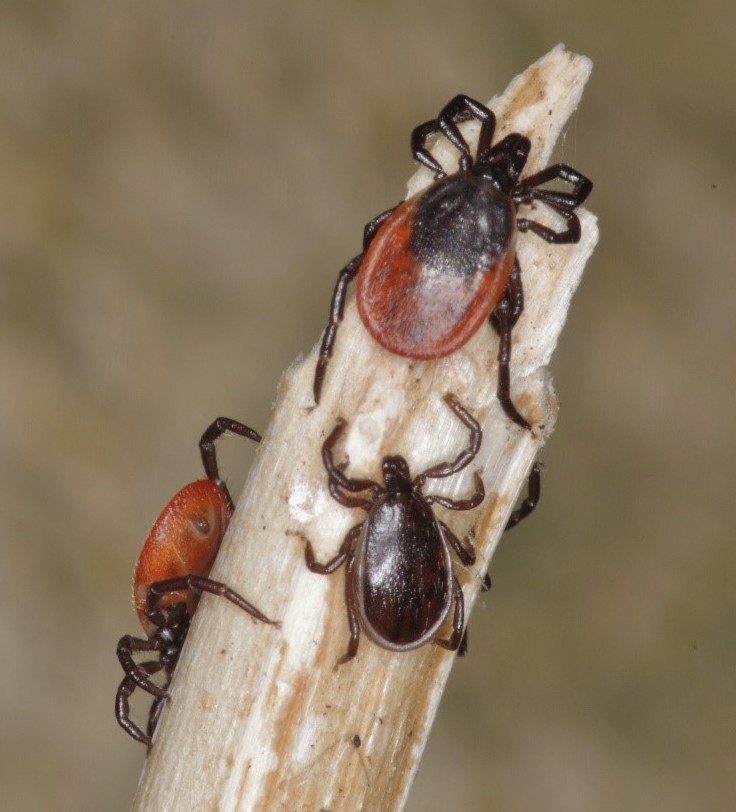Background
Tick-borne encephalitis (TBE) is an illness caused by the tick-borne encephalitis virus (TBEV) infection, often limited to causing only a febrile disease but sometimes leading to severe neurological complications and death. There are approximately 13,000 to 15,000 cases of TBE caused by the TBEV virus annually, with endemic occurrence in Europe and north-eastern Asia. TBE is preventable with safe and effective vaccines, but the vaccination coverage remains low in several endemic countries. No specific antivirals are effective to treat TBE, and the treatment is based only on supportive and symptomatic therapeutic measures. This study investigated the human neutralizing antibody responses to TBEV in a cohort of infected and vaccinated individuals. Monoclonal antibodies isolated from the TBEV infected donors were characterized in detail, including solving the crystal structure of antibody-antigen complexes. Prophylactic or early therapeutic antibody potency was tested in mice that were lethally infected with TBEV.
Results
Sera from 141 patients with acute TBE and ten individuals vaccinated against TBEV were analyzed for the serum neutralizing activity using luciferase-expressing TBEV reporter virus particles. Neutralizing activity ranged from complete to undetectable and was significantly lower in the vaccinees. Peripheral blood obtained from six TBE patients identified as having potent humoral neutralizing activity as well as from three vaccinees was used for the purification of B cells expressing surface receptors specific for the TBEV envelope protein domain III (EDIII). In total, 776 IgG antibody heavy and light chain gene pairs were amplified by RT-PCR and sequenced. Surprisingly, sequence analysis revealed antibodies with similar features within and between individuals, indicating that the memory B cell response to the TBEV EDIII converges toward specific antibody genes. Fifty-nine antibodies were cloned, recombinantly expressed, and tested in ELISA for binding to TBEV EDIII. Seven antibodies, all isolated from infected donors, were potent neutralizers of TBEV RVPs with IC50s below 1 ng/ml; four of these were also tested for their neutralizing activity using an authentic TBEV and showed IC50s ranging from 35.9 to 268.8 ng/ml. Most of the antibodies expressed also demonstrated broad activity against other tick-borne flaviviruses, such as Langat virus, louping-ill virus, Powassan virus, Omsk hemorrhagic fever virus, and Kyasanur Forest disease virus.
Crystal structures of the antigen-binding fragment (Fab) from one of these potent and broad antibodies, T025, in complex with the EDIII domains of all three subtypes of TBEV were solved. The structure revealed that the antibody binds the lateral ridge of EDIII in the proximity of the EDI–EDIII hinge region.
To determine whether the T025 antibody can protect against TBEV infection in vivo, we performed a series of experiments in mice that represent a good model of severe TBE cases in humans. In prophylaxis experiments, all mice treated with isotype control died, but administration of T025, even at a dose of 0.1 µg per mouse, conferred complete protection. Also, post-exposure protection could be achieved by T025 if the therapy was initiated on day 1 or day 3 post-infection. Mice treated with T025 at later time points failed to respond. This clearly indicates that T025 is efficacious in the prevention and early treatment of TBEV infection in mice.
Discussion
Administration of TBEV hyperimmune plasma is recommended for post-exposure prophylaxis for individuals that present within 3 d of a tick bite, e.g., in Russia, Ukraine and Kazakhstan. In Europe, anti-TBE immunoglobulins were previously also used for post-exposure prophylaxis and treatment, but are no longer available. This treatment demonstrated therapeutic effects, but concerns regarding antibody-enhanced disease led to its suspension. Here, we present an alternative to the use of hyperimmune immunoglobulins by using well defined and highly potent human monoclonal antibodies. The antibodies described here have broad activity against multiple tick-borne flaviviruses and have significant potential for clinical use in individuals who are at high risk or for post-exposure prophylaxis. The antibodies also have the potential to be used for therapy in the early stages of infection.

Figure: Ixodes ricinus ticks, the main vector of TBEV in Europe (photo by Jan Erhart)
Literature
Agudelo M, Palus M, Keeffe JR, Bianchini F, Svoboda P, Salát J, Peace A, Gazumyan A, Cipolla M, Kapoor T, Guidetti F, Yao KH, Elsterová J, Teislerová D, Chrdle A, Hönig V, Oliveira T, West AP, Lee YE, Rice CM, MacDonald MR, Bjorkman PJ, Růžek D, Robbiani DF, Nussenzweig MC.
Broad and potent neutralizing human antibodies to tick-borne flaviviruses protect mice from disease.
J Exp Med. 2021 May 3;218(5):e20210236. doi: 10.1084/jem.20210236. PMID: 33831141; PMCID: PMC8040517.
Authors:
Marianna Agudelo is a 5th-year student of the Graduate Program in Bioscience at Rockefeller University in New York. She is in Prof. Michel Nussenzweig’s group focusing on the flaviviruses tick-borne encephalitis virus, Zika and dengue. She’s working to understand how these viruses exploit the human immune system, instigating responses that enhance rather than fight infection, and how to best circumvent this problem.
Prof. Daniel Ruzek is the head of the Laboratory of Arbovirology at the Institute of Parasitology, Czech Academy of Sciences, and the head of the Laboratory of Emerging Viral Infections at the Veterinary Research Institute in Brno, Czech Republic. His research is primarily focused on tick-borne encephalitis virus and other flaviviruses, including the development of new antivirals and vaccines
Compiled: May 2021